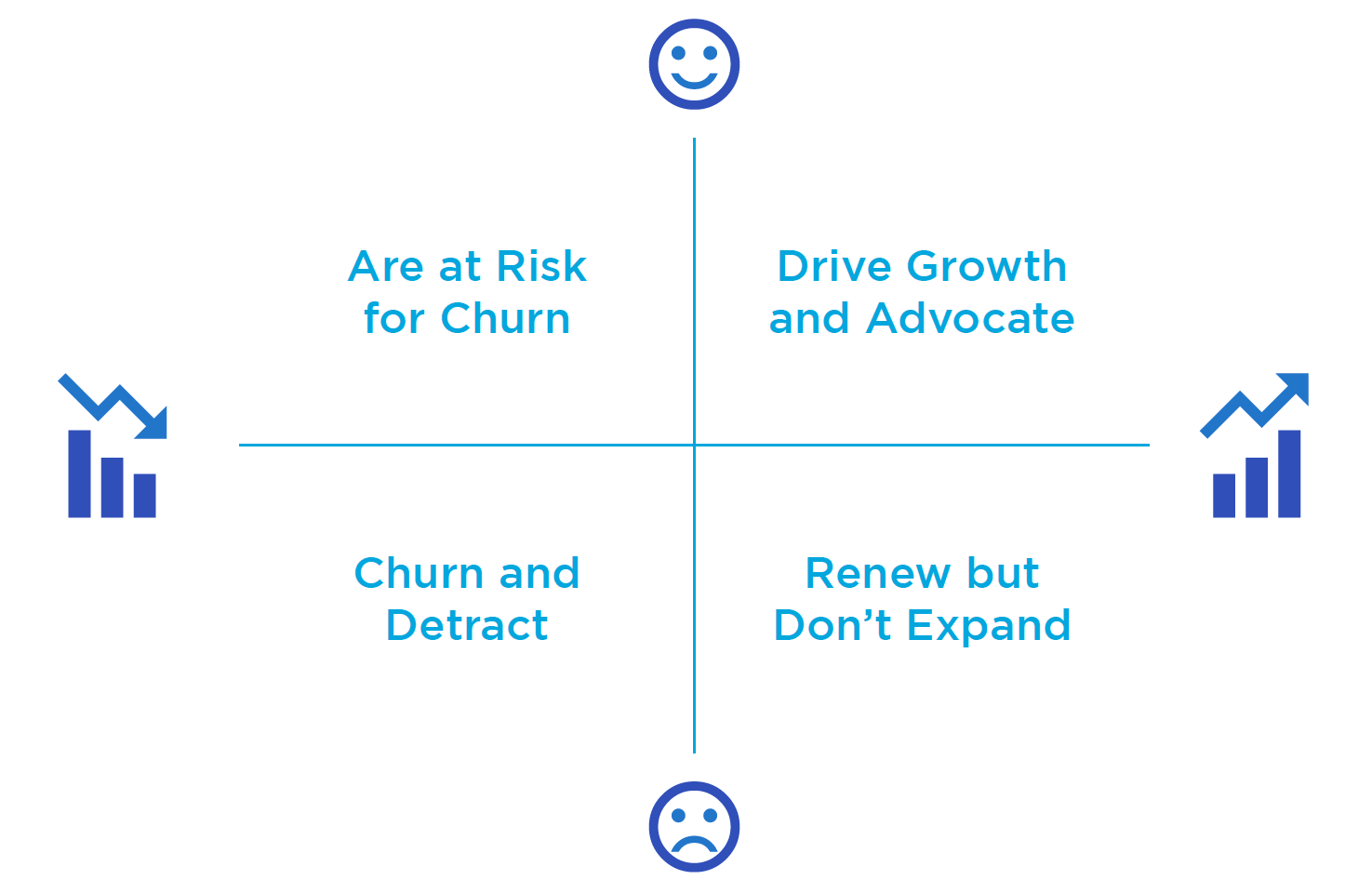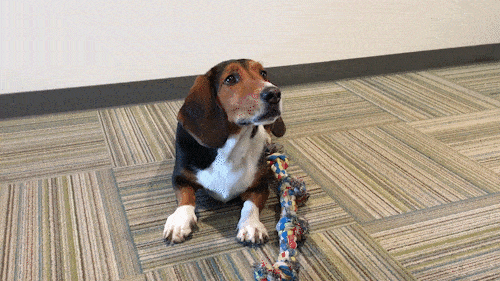Meet Hank—a 6-year old basset hound who loves to play fetch, howl for no reason, and get all the belly scratches.
Hank is also a treasure trove of understanding about product analytics and feature usage.

Don’t worry, this article is more than just cute pictures and GIFs of Hank (although I’d argue that might still qualify as a good way to spend your time). There’s valuable insight into product analytics in the paragraphs to follow.
Your users won’t tell you what’s on their mind
Let me set up the analogy a bit further. If you’re in the business of creating products or helping your customers be successful, caring for Hank is quite a similar task.
There are a lot of consequences if you don’t create products and features that your customers like. They won’t use them, or they won’t be successful with them. In the end, they’ll probably stop using those unfavorable features altogether. Worst-case scenario—they’ll go to your competitors to find a better solution.
Your users are like Hank and your product is like one of his many dog toys. If Hank doesn’t like a toy, he’s not going to play with it. Simple as that. Same goes with Hank and food. If Hank doesn’t like what you’re giving him, he’s not going to eat it (well, he probably will, he’s a bit of a trash compactor).
But here’s the difference: Hank is going to tell you what he likes and what he doesn’t. There’s no holding back when it comes to this hound dog—but can you say the same about your customers?
Do you think they will send you an email out of the blue listing all the features they’re not using, or all the ways the product could be better? Probably not. It’s much easier to just churn and go elsewhere.
Collecting product analytics and feature usage is essential
You might be thinking, “but I talk to my customers and I send them NPS surveys, so I know what they’re using and what they’re not!” While having regular discussions with your clients and conducting surveys, like NPS, is an important part of the equation, it shouldn’t be the only way you gauge satisfaction. This type of research is very reactive—it puts all the pressure on the customer.
If you want to be proactively assessing user sentiment so you can build a better product, you can do one of two things:
- Bug your customers until they can’t stand the sound of your voice by asking them about every little detail each and every week.
- Passively collect data on your customers’ habits, including what features they’re using, which they aren’t, and where in their customer journey they’re getting stuck.
Consider these options with Hank—if I wanted to find out what toys he likes and doesn’t like, I’d watch his behavior. Does he play with the rope toy? Does he not seem interested in the stuffed alligator with a squeaker inside?
After just a bit of observation I can quickly figure out what his preferences are—and then I know exactly what to buy (and what not to buy) to keep him happy.

There are so many benefits to having this level of information (beyond never buying the wrong dog toy again). The following are just a few examples:
You can identify ways to tailor the customer’s product experience so they’re using features that will give them value.
Have you ever talked to a customer who mentioned they bought a new product to use in tandem with yours, but you already offer that exact feature? Or maybe they’ve been struggling with a business problem that you could have solved for them? If they only knew about that feature!
It’s a classic mistake to assume your customers know every feature of your product. They don’t. You can help them become more confident, successful users if you can see what features aren’t being adopted. Using these insights, you can educate and direct your users to useful features and workflows they might be missing out on.
You can pinpoint where customers are getting stuck in your product.
There’s a reason UX design is so important: software can be complicated. As a product professional, you’re up close and personal with your product every day which can skew your perception. What might make sense to you can be a Rubik’s cube to your customers. But if you can track your customers journey in your product and see where they drop off, then you can easily correct it. Without that kind of visibility, you might as well be playing pin-the-tail-on-the-donkey for how to improve your user’s experience.
You can spot negative trends and correct them before it’s too late.
How often does customer churn take you by surprise? What if you had known something was wrong earlier—could you have saved that account?
Imagine if you could get an alert whenever a customer’s or account’s usage drops. Never again will a customer that you thought was rock-solid slip through the cracks.
Now imagine triggering emails, in-app engagements, and playbooks in your customer success platform to reverse these trends. Because you were alerted to the inactivity, you can be proactive and drive adoption before your customer even realizes they’re no longer satisfied with your product.
You can save money by know what features to invest in (and what not)
No company ever has 100% adoption on every aspect of their product—there’s always going to be misses. Just look at the flops from some of today’s biggest’s companies: Google+, Twitter Moments, Microsoft Kinect, etc.
Poor adoption isn’t something to be upset about—but what you should be upset about is not knowing the feature was a miss until way after your customer base had decided it wasn’t something they needed.
Just consider how much money goes into supporting features! From developing improvements, creating documentation, internal training, and more—all of that should be going towards features your customers love.
It’s not enough for users to adopt features
Let’s revisit the Hank analogy for a second. I mentioned at the outset that Hank isn’t all that picky about his food—he might prefer one brand over another, but he’s going to gobble it all up regardless. But as any pet owner knows, if you don’t manage their diet, it’s going to mean bad news.

The same can be said for your customers. Just because you create a set of features with high adoption, doesn’t mean you’re forming healthy habits that will make them successful.
You need to marry adoption + success to drive the right outcomes. Without this pair, you’re going to run into the dreaded high-adoption churners—customers who like your product, but they don’t love it, and they definitely don’t find it essential. This means that when the time comes to cut budget or do some horse trading for a little more spending money, your product will be on the chopping block. In terms of the 2×2 below, without adoption + success, you’re not going to be in the top right quadrant.

Let’s imagine your company sells a live chat product that is placed on the customer’s website. With some basic usage data, you might see that your customers are having lots of conversations, which seems great. But what if those conversations are the wrong ones to be having? Instead of creating new opportunities, your product is wasting your customer’s time.
With advanced product analytics, you can identify traits of a good conversation and segment the different types—giving you insight into not just whether your customers have high usage, but whether they’re achieving their desired outcomes.
You need to love your customers the way you love your pets
If you take one thing away from this blog, other than Hank being an adorable, floppy-eared pup, it should be that the key to being successful in business is to love your customers—and your product should reflect that. Businesses have been successful without putting their customer first, but those are always the ones ripe for disruption.

With that in mind, think about whether you’re collecting product analytics—and even if you are, are they thorough enough? Or is it time to look at a purpose-built platform? If it is, start a free trial of Gainsight PX and give it a whirl. If it doesn’t help you build products your customers love, I’ll send you some more pictures of Hank as a token of our gratitude.

